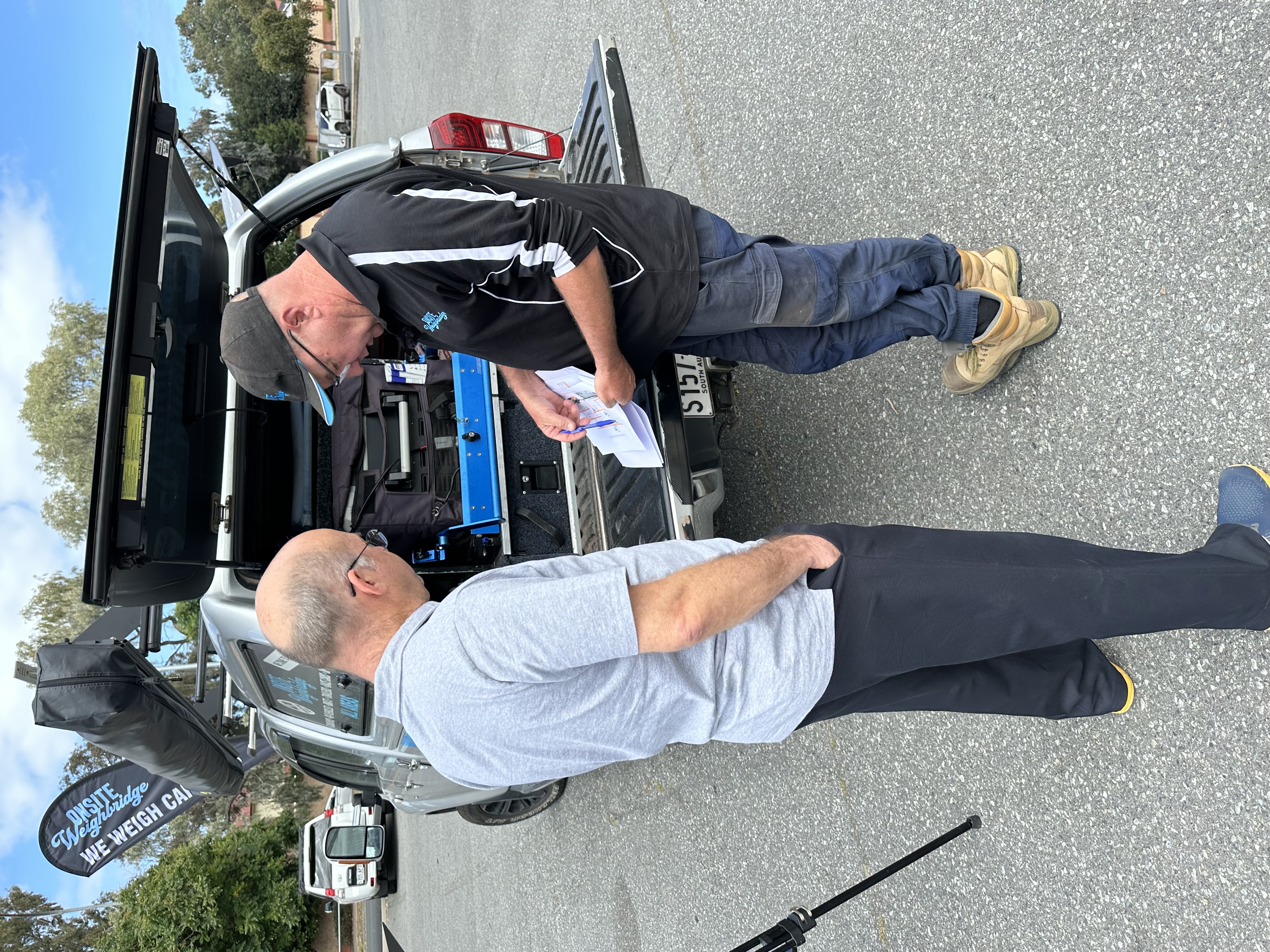Vehicles come in all shapes and sizes, and they carry all sorts of loads. In this piece, we’re digging into a couple of what I’d call extreme examples - scenarios where tyres are running right on the edge of their limits.
In our video on this topic, Toyo’s resident tyre guru, Steve Burke, used a popular vehicle type, the motorhome, as a case study. Specifically, a Fiat Ducato, which makes a tidy base for an RV, but there’s only so much gear you can bolt onto the back before you hit trouble.
We all know weight is the enemy. And the Ducato illustrates why.
It rolls on commercial light-truck rubber, 225/75R16C tyres with a 121 load index (that’s 1,450kg of carrying capacity per tyre). On the front axle, the weighbridge showed 1,860kg—so 930kg per tyre. That’s around 30% under its max load. Great. Plenty of buffer. The required pressure for that load? 430kPa (63psi). Sorted.

But the rear axle? A different story.
After weighing, we found the back end was carrying a whopping 2,800kg. That’s 1,400kg per tyre, just 50kg shy of the tyre’s limit. You don’t need a calculator to see that the safety margin is razor thin. Steve recommends a minimum 10% buffer. This setup had 3.5%. Not enough.
And here’s where the numbers get gnarly: to carry that load safely, the tyres need 575kPa -that’s 83psi. Let that sink in—83psi!
In this case, something’s got to give. Maybe you drain the sub-floor water tanks. Maybe you move the fridge forward or shift personal luggage behind the front seats. Maybe you ditch a few gadgets altogether, but load must come off.
The towing trap: bigger isn’t always better
A while back, I was running a 4WD course where we got talking about load and pressure. I asked the group who towed, and what they were towing. No surprise, everyone had something behind them: boats, campers, caravans, toy haulers - the usual suspects that make up the great Aussie lifestyle.
One bloke asked me to look at his setup. A 2,500kg on-road caravan. At first, I breathed a little sigh of relief, it’s within the ballpark for a medium-sized 4WD.
But here’s where things go sideways.
We’ve all heard the marketing line that your ute or wagon can tow 3,500kg. I’ve never bought into that. I don’t believe the towed weight should ever exceed the tow vehicle’s weight. If things go pear-shaped - wind shear, evasive braking, a sudden swerve -the physics don’t lie. A heavy trailer can take control in an instant.
Add to that the fact that many vehicles lack the suspension to cope with transferred load, don’t have the brakes to stop it, and struggle to overtake or climb safely under strain.
Back to our 2,500kg caravan.
I did a quick calc in my head - tandem axle means 625kg per tyre. No drama. That pressure requirement is modest, maybe 210kPa (30psi). But then he drops a bombshell: it’s a single-axle van.
Suddenly we’re dealing with 1,250kg per tyre. That’s right on the edge. Worse still, the tyres fitted were LT235/75R15s with a 116 load index, which tops out at exactly 1,250kg. No reserve capacity. None.
That might be fine on a showroom floor with empty tanks and no gear. But throw in luggage, a fridge full of beer, camping gear, and a couple of bikes, and you’re over. He was running 305kPa (45psi) based on manufacturer guidance. Not enough.
The fix? Better rubber, smarter setup
I suggested a tyre and wheel upgrade. A 16” inch commercial LT tyre with a 120 or 121 load index gives you 1,400 to 1,450kg capacity per tyre and restores a healthy safety buffer.
At 465kPa (68psi), you’d have around 15% load reserve which is enough to handle the real-world conditions caravanners face. That’s a far cry from the 3–4% margins we were seeing earlier.
Of course, that means a bit of re-engineering: revised guard clearances, maybe an updated VIN plate to reflect the new specs. But it’s a safer, smarter way forward.
Final thoughts
High-load applications demand proper scrutiny. There’s no room for guesswork or blind trust in a tyre’s limit. If you’re pushing the envelope, whether it’s a heavy motorhome, a single-axle van, or a toy-loaded trailer, you need the right tyre with the right load index, and the right pressure.
That starts with a weighbridge, followed by a conversation with your tyre dealer. Get the data. Talk to someone who knows what they’re doing, like Steve at Toyo. There’s a tyre in their lineup to suit your setup.
Don’t leave it to chance.
Discovery Sessions may change how you think about the rubber beneath your rig.
Want to learn more? Watch the video below or Sign up here to our Online Discovery Sessions, to become a Toyo certified dealership today!

